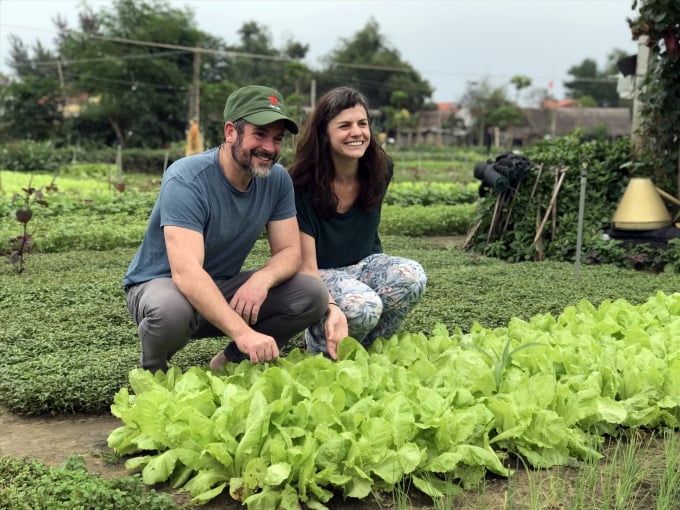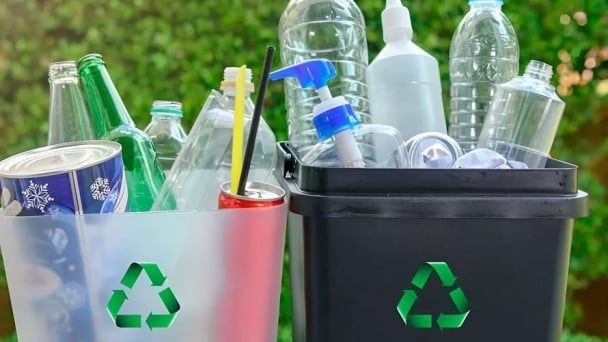May 21, 2025 | 00:44 GMT +7
May 21, 2025 | 00:44 GMT +7
Hotline: 0913.378.918
May 21, 2025 | 00:44 GMT +7
Hotline: 0913.378.918

Dr. Le Xuan Nghia, former Vice President of the National Financial Supervisory Commission. Photo: Tung Dinh.
Vietnamese agriculture can in fact be seen as a strategic spearhead and a real strength as there are few countries in the world that have such powerful agricultural products as Vietnam.
Philip Kotler, one of the founders of modern marketing, said Vietnam should become a “kitchen” of the world, because of its favorable natural conditions and both tropical and temperate climate. Each region, each ethnic group in Vietnam has its own typical agricultural products, forming cuisine that no other country in the world has.
Assessing the value of Vietnamese agricultural products is thus based not only on export data but on many other hidden factors. National-level methodical strategies are required.
Looking at the 2021 export figures we can clearly see the role of our agriculture and agro-forestry-fishery products. In 2021 exports of agro-forestry-fishery products reached more than USD 48 billion and the added value of agriculture was 50 - 60%, equal to approximately USD 25 billion of the country's GDP. Meanwhile, of the USD 250 billion from industry, only 5% of value was added, equal to approximately USD 12.5 billion. This means the only benefits received are workers’ wages from FDI enterprises, while the remaining profits are all transferred back to their home countries. These figures show how essential a strategy for investing in agriculture and improving the value of Vietnamese agricultural products is.
The first step is a communication strategy. The media is now a huge power and, in some ways, it can be a decisive factor for trade, especially for agricultural products. But our communication strategy is still traditional and it is very difficult to improve.
Consumers currently do not have the right conditions to see and touch our agricultural products with their own hands as all information has been digitized, so I think it is necessary to have a digital communication strategy to promote all that Vietnam has to the world.
Alibaba Group has recently implemented an extensive program to create a communication platform for all small and medium enterprises worldwide, mainly for agricultural products. This shows that a digital platform is a viable means of helping customers identify products so producers can promote trade, communicate regarding their goods, and sell them. We cannot stay out of this trend.
Product information needs to be transparent in order to let the world see what we have, allowing us to decide how to participate in the world market. It is necessary to have an ecosystem of diverse goods, many products with different advantages for customers to choose from.
The second strategy should be focusing on the quality of Vietnamese agro-products, especially in the food processing industry. For a long time we thought that with so many agricultural products our processing of agricultural products must be our strength, but that is not true.
Many industrial strategists have declared agricultural product processing as one of the most complicated processing technologies. As it is human food, it is subject to strict requirements from countries. A car or motorbike can be recovered and repaired if something goes wrong with it after selling, but not so with food. Food is human life: if there is any problem, consumers will boycott and our reputation will also be completely lost and it will not be sold to anyone.
This means that food processing and food exports must be considered as a very high-level industry, similar to pharmaceutical technologies. It is not as simple as a piece of food. However, for a long time, I have thought that everyone from policy-makers to producers and processors in Vietnam have not been deeply aware of the importance of this issue.
I still remember a time when industrial strategies were being planned, someone suggested Vietnam should focus on food processing because we have always been proud to be an agricultural country! But I also remember at that time Mr. Tran Van Tho, Professor of Economics at Waseda University in Tokyo, Japan firmly said not to think of it as simply food processing. He said it was much more complicated than making a television or a computer. “If Vietnam wants to work in the food industry, Vietnam must first of all focus on the electronics industry. Otherwise Vietnam must learn from Thailand and Malaysia to link up with foreign businesses to take advantage of their technology. If VIetnam does it by itsel, it will be very difficult,” he said.
Only by now can I see that what Mr. Tho said was true. Because Vietnam has invested in electronics, we can now export at full potential. That said, exporting agricultural products with a good market reputation requires a grand strategy focusing on the entire technology chain of production, harvesting, and processing.
The third step is an industrial preservation strategy. It is often thought that input and the production processes alone determine the value of agricultural products, but in fact preservation is extremely important because it is the easiest process to be contaminated.
Today Vietnam and many countries are using Japanese frozen preservation technology. But in the world many other new technologies for food preservation have appeared, such as sonic freezing. This technology does not use ice but a very thin snow layer that can keep the product four times as fresh and reduce transportation costs by approximately 70%.
A policy of applying new technology would solve the problem of the quality of Vietnamese agricultural products because it is like an “invisible hand” that can control production, harvest and preservation. However, what we are currently weak at, in terms of agricultural products for export, is the lack of comprehensive, detailed, modern strategies and a lack of funding for their implementation.

Dr. Le Xuan Nghia. Photo: Tung Dinh.
No matter what, Vietnamese agricultural products or cuisine cannot reach out to the world simply due to a lack of policies.
What Vietnam is weakest in? It is technology. All claims about 4.0 industry or digitization are not substantial and are still partly on paper. Vietnam's technology compared to other ASEAN countries is weaker and we do not have the policies to improve it.
In Taiwan they have a national institute for technology funded by the government and given very specific tasks. Thanks to a proper strategy, at a macro level, the value of Taiwan's agricultural products is significantly enhanced.
We have had policies but at times we were wrong right from the moment we set out.
Some policies and regulations on licensing new technology take too long to come into effect. For example, licensing semi-organic fertilizers takes approximately two years to complete. In a time when technology develops and changes so rapidly yet it takes two years to be licensed, what is new technology anymore?.
Convincing farmers to use new technology is a huge problem and the government must have specific target programs. Applying new technology will result in a cost increase so it is difficult for farmers to accept. There must be supportive policies with a longer-term vision for them.
Moreover, it is a fairness issue. A man uses new technology to have a clean product, but still sells it at the price of a unclean one, which discourages others who follow the new technology. Those problems cannot be solved by farmers or businesses but by the government, management authorities, and policymakers.
In short, policies need to be substantive, supportive and accompanying businesses.
The value of Vietnamese agricultural products should be enhanced not only for exports but also for promotion and branding in our own country.
Over the past few years, I have found the added value of labor in the agricultural and service sectors has gradually increased but decreased in the industrial sector since 2005.

Combining agriculture and tourism is an extremely effective channel to promote and enhance the value of Vietnamese agricultural products.
This shows that strategies for developing and improving the value of agricultural products need to combine with and mutually support the two economic spearheads, agriculture and the service industry.
This combination must be the first aspect. Because most of the surplus labor in our agriculture sector is leaning toward the service sector more, with a number three times larger than the industry sector. This trend will become more and more obvious as the industry continues to digitize and automate. The surplus labor in this area will be less and less.
To solve the labor problem, combining agriculture and tourism would be an extremely effective way of promoting and enhancing the value of Vietnamese agricultural products.
The second aspect is culture. Vietnamese folklore exists mainly in the countryside and agriculture. That is a strength that I think we have not exploited properly to improve the agricultural product value.
Foreign tourists coming to Vietnam to travel and eat, learn about our culture. Thus, only farmers and rural areas can provide cultural services to attract tourists and promote the image of our nation with great cultural value...
The third aspect is cuisine. Tourism without the support of farmers and rural areas will not solve any problems. Vietnamese cuisine is among the healthiest in the world today and richer than any other country.
Last but not least, it is about experiencing landscapes.
The more civilized people's lives become, the "I" lessens, and the "we" enlarges. The "we" here means our community. Experiencing Vietnamese landscapes, community tourism, enjoying food and learning about Vietnamese culture will create unforgettable impressions in the hearts of tourists. Then when they return to their country they will definitely buy Vietnamese agricultural products.
Edited by Hoang Anh. Translated by Linh Nguyen.

(VAN) Dong Thap farmers attained an average profit margin of 64% during the summer-autumn 2024 crop (first season), while An Giang and Kien Giang farmers followed with 56% and 54%, respectively.

(VAN) As a doctoral student doing research on renewable energy and electrification at Harvard University, the author shares his musings on electricity, nature, and countryside memories.

(VAN) The decree on Extended Producer Responsibility (EPR) ensures transparent management and disbursement of support funds, avoiding the creation of a “give-and-take” mechanism.

(VAN) Hue City rigorously enforces regulations regarding marine fishing and resource exploitation, with a particular emphasis on the monitoring of fishing vessels to prevent illegal, unreported, and unregulated (IUU) fishing.

(VAN) Hanoi People's Committee has issued a plan on reducing greenhouse gas emissions in the waste management sector with 2030 vision.

(VAN) Vietnam's draft amendment to Decree No. 156 proposes a mechanism for medicinal herb farming under forest canopies, linking economic development to population retention and the sustainable protection and development of forests.

(VAN) In reality, many craft village models combined with tourism in Son La have proven effective, bringing significant economic benefits to rural communities.